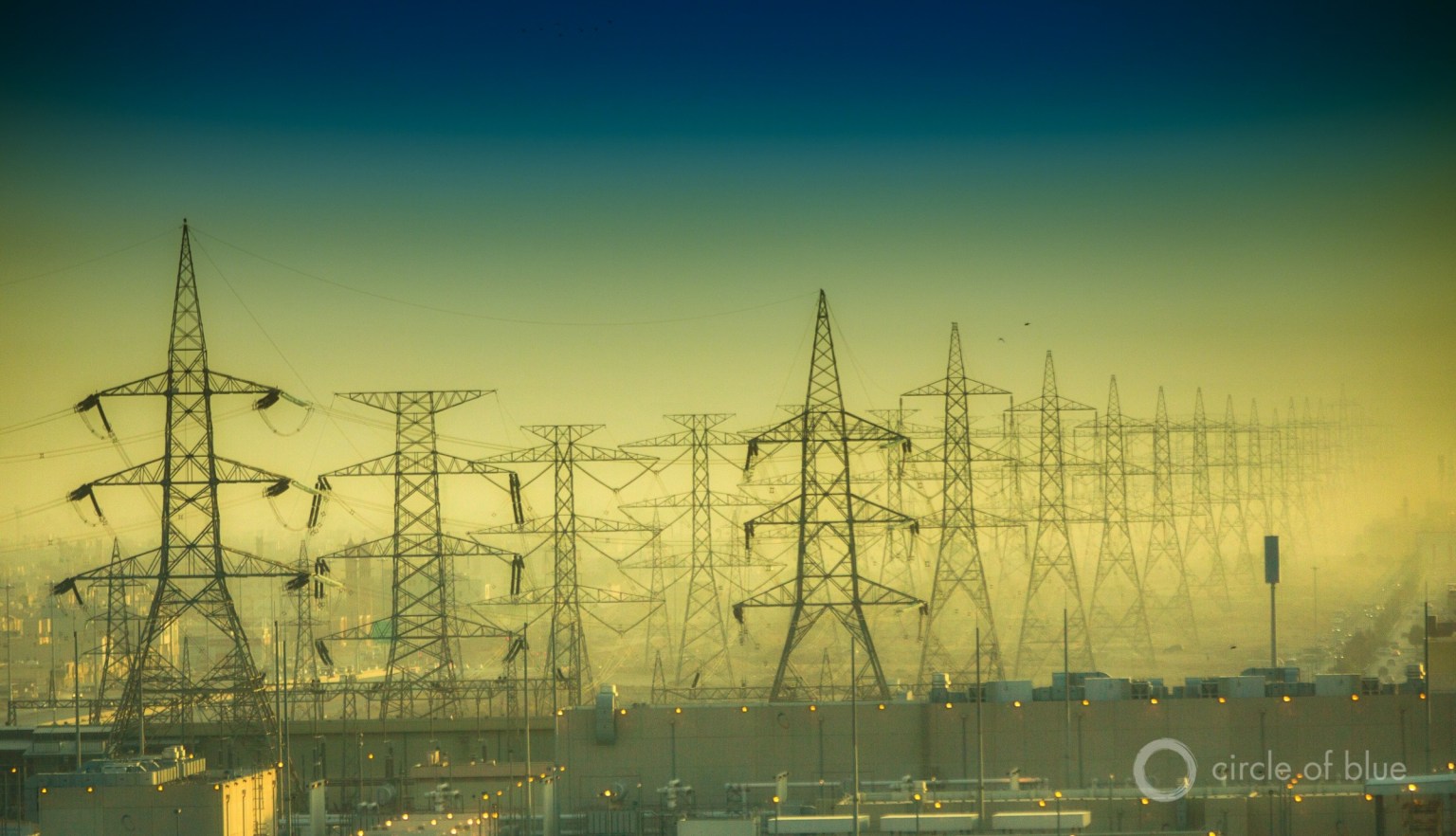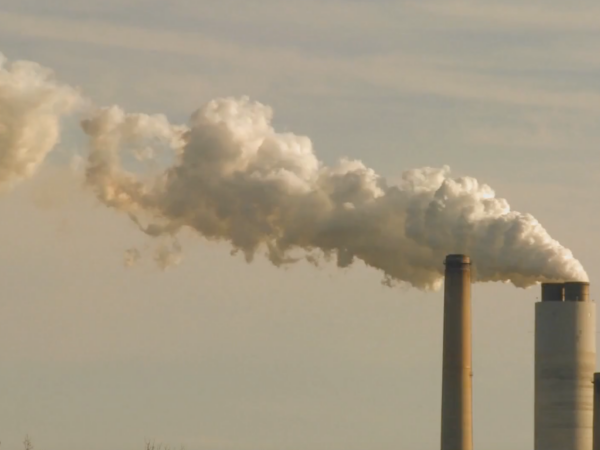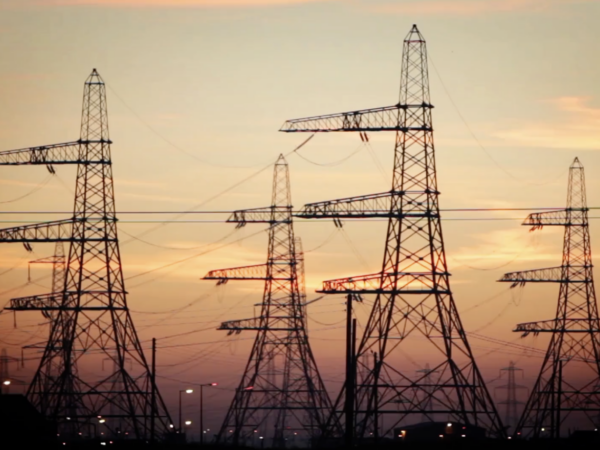
By Brett Walton, Circle of Blue
The Great Lakes News Collaborative includes Bridge Michigan; Circle of Blue; Great Lakes Now at Detroit Public Television; and Michigan Radio, Michigan’s NPR News Leader; who work together to bring audiences news and information about the impact of climate change, pollution, and aging infrastructure on the Great Lakes and drinking water. This independent journalism is supported by the Charles Stewart Mott Foundation. Find all the work HERE.
- Plans to reduce carbon emissions should take water into account.
- Some low-carbon energy options require significant amounts of water.
- Water can also be a climate solution. Restoring wetlands and peatlands for their water-purifying and flood-buffering traits also preserves their capacity to act as vital carbon sponges.
Chinese President Xi Jinping pledged on September 21 that his country would no longer finance coal-fired power plants abroad, making a high-profile commitment to move away from some forms of fossil fuel infrastructure less than six weeks before a pivotal global climate conference in Glasgow, Scotland.
While climate campaigners applauded the carbon-reducing benefits of fewer new coal plants, the move comes with another, less obvious dividend: less strain on water. Coal power, from mining to generation, is among the thirstiest and most polluting ways to produce electricity.
Eliminating coal from the world’s energy mix is a no-brainer for climate policy and a win for water, as well as for human lungs. But as diplomats meet in Glasgow starting on October 31 to solidify plans to keep the planet from dangerously overheating, water experts say the negotiators need to keep more than carbon in mind.
Some carbon-reducing energy options, if not well designed, can deplete rivers and pollute waterways.
If you don’t get water right, your mitigation efforts are going to be less effective.” — Howard Bamsey, Global Water Partnership
“If you don’t get water right, your mitigation efforts are going to be less effective,” Howard Bamsey told Circle of Blue. Bamsey is the chair of the Global Water Partnership, an advocacy and skills-building network working to integrate water with climate decisions.
Potential pitfalls for water abound in climate policy, especially if the world is to limit the global average temperature from rising more than 1.5 degrees Celsius than it was two centuries ago. It is already 1.1 degrees C higher.
Wind turbines and solar power, two sturdy and growing sources of renewable energy, require negligible amounts of water. But other low-carbon technologies do not tread as lightly.
Nuclear plants hoover up enormous volumes of water for cooling, killing aquatic life and warming rivers in the process. Using hydrogen as a fuel without methane gas as a feedstock requires a reliable water source. Growing trees to store carbon or harvesting plants to convert into biofuel is a commitment of land, water, and fertilizer, which can pollute rivers and aquifers.
More difficult maneuvers like trapping carbon emissions from power plants or extracting carbon directly from the air require even more energy, which affects water use because most thermal power plants need water for cooling. A study published in 2020 found that direct air capture required a surprisingly large volume of water, primarily because of the energy to run the equipment. The energy transition will eventually shift electricity production away from water-intensive thermal power, but the near-term risk is real.
With enough forethought, some of these drawbacks can be averted, says Lorenzo Rosa, a postdoctoral research associate at ETH Zürich who studies water, energy, and food systems.
Carbon-capture facilities could be sited in areas without water stress. Biofuel crops, whether they are switchgrass or sugarcane, could be grown in wetter areas.
“In particular, trade-offs between climate mitigation and water resources should be weighed,” Rosa wrote in an email to Circle of Blue. “Climate change mitigation solutions should be prioritized in regions not affected by water scarcity.”
Henk Ovink, the Netherlands’ special envoy for international water affairs, told Circle of Blue that recognition of water in national climate plans is “increasing but not enough.” He sees the Glasgow conference as a way to build momentum “as a stepping stone for more action.”
The role of water in adapting to a changing climate is beginning to achieve wide acceptance. Severe droughts in Australia, East Africa, the Mediterranean, and the American West in recent years have underscored the fact that a warming climate means dry areas will become drier. Horrific floods in southern China and Germany this summer brought home the destructive power of too much water. Out of these disasters, water advocates see an opening for highlighting the need to build societies that can live with climate disruptions.
But is there the same focus on water’s role in reducing carbon emissions as there is for adaptation? “Absolutely not,” according to Ingrid Timboe, policy director for the Alliance for Global Water Adaptation.
“And there needs to be,” Timboe continued. “That’s one of the things that we are pushing on a little bit more. To really highlight where water can contribute to reaching our mitigation goals, but also where there are potential risks.”
One of the risks Timboe mentioned is hydropower. If a country is relying on flowing water to generate electricity, what are its plans during a drought, like those currently diminishing hydropower production in Brazil and California? Does it have back-up sources? Or will it shift to more carbon-intensive fuels?
Water can be harmed by ill-designed carbon fixes. But water can also be part of the solution. Restoring wetlands and peatlands for their water-purifying and flood-buffering traits also preserves their capacity to act as vital carbon sponges. Rivers provide a cooling effect on nearby lands, functioning as a natural air conditioner.
There will be opportunities for negotiators in Glasgow to learn more about the risks and opportunities. Timboe is co-chair of a water “pavilion” that is intended to be a center of discussion for water and climate. In the sprint to a net-zero carbon future, a water break might keep the race on the right track.
Catch more news on Great Lakes Now:
Water Groups Lauded a Side Agreement at the Paris Climate Conference. Then It Languished.
Company formerly known as Nestle drops water withdrawal permit
Featured image: Transmission lines in Riyadh, Saudi Arabia, stretch to the horizon. Photo © J. Carl Ganter/Circle of Blue




